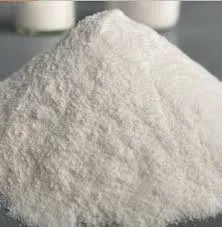
សីហា . 06, 2024 12:00 Back to list
Exploring the Benefits and Applications of Liquid Thickeners in Various Industries and Recipes
The Role of Liquid Thickeners in Food Production and Culinary Applications
Liquid thickeners are essential ingredients in both the food industry and home cooking, playing a pivotal role in achieving desired textures and consistencies in various dishes. By increasing the viscosity of liquids, these thickeners enhance mouthfeel, stability, and overall sensory appeal. In recent years, the demand for liquid thickeners has surged, driven by advancements in food science, dietary needs, and culinary innovations.
Liquid thickeners come in various forms and can be derived from natural or synthetic sources. Common examples include cornstarch, xanthan gum, guar gum, and arrowroot. Each thickener has unique properties, making them suitable for specific applications. For instance, cornstarch is a popular choice for sauces and gravies due to its ability to create a smooth and glossy finish. On the other hand, xanthan gum, a product of fermentation, is often used in gluten-free baking, providing structure that mimics the properties of gluten.
The functionality of liquid thickeners lies in their ability to absorb water and swell, thus increasing the thickness of the liquid. This process is crucial for achieving the right consistency in sauces, soups, dressings, and gravies. The choice of thickener can significantly impact the final product. For example, a sauce that relies on cornstarch will typically have a clear, shiny appearance, whereas one thickened with flour will be opaque and have a different mouthfeel.
In addition to enhancing texture, liquid thickeners also contribute to the stability of emulsions, preventing ingredients from separating
. This quality is particularly important in salad dressings and mayonnaise, where a uniform consistency is essential for consumer acceptance. By using the right thickener, manufacturers can achieve products that appeal to a wide range of consumers, ensuring repeat purchases and brand loyalty.liquid thickener

Liquid thickeners also play a crucial role in meeting dietary needs. For individuals with swallowing difficulties, often referred to as dysphagia, thickening agents are vital in altering food and drink to a safer consistency. Specialized thickening agents are available for healthcare settings, allowing caregivers to prepare meals that are both safe and enjoyable for patients. The convenience of these thickeners has made them invaluable in hospitals, nursing homes, and for home care.
From a culinary perspective, chefs and home cooks appreciate the versatility of liquid thickeners. They allow for creativity in the kitchen, enabling cooks to experiment with different textures and flavors. Techniques such as incorporating a slurry (a mixture of thickener with water) into a simmering sauce or using a roux (a mixture of fat and flour) to create a base for soups demonstrate the wide-ranging applications of these ingredients. Furthermore, the trend towards plant-based cooking has led to increased interest in alternative thickeners from legumes and other plant sources, expanding the options available for both professional chefs and home cooks.
Moreover, with a growing emphasis on health and nutrition, liquid thickeners are being examined for their functional benefits. Some thickeners, like guar gum, not only serve to alter consistency but also offer dietary fiber, which can aid in digestion and promote satiety. As consumers become more health-conscious, the use of functional thickeners that contribute additional health benefits will likely continue to rise.
In conclusion, liquid thickeners play a vital role in the culinary landscape, serving both functional and aesthetic purposes in food production. With their diverse applications and increasing importance in health-focused diets, they are set to remain a staple in kitchens and food manufacturing for years to come. As research continues to uncover new thickening agents and their benefits, the future of liquid thickeners looks promising, ensuring that they will continue to shape the way we experience food.
-
Versatile Hpmc Uses in Different Industries
NewsJun.19,2025
-
Redispersible Powder's Role in Enhancing Durability of Construction Products
NewsJun.19,2025
-
Hydroxyethyl Cellulose Applications Driving Green Industrial Processes
NewsJun.19,2025
-
Exploring Different Redispersible Polymer Powder
NewsJun.19,2025
-
Choosing the Right Mortar Bonding Agent
NewsJun.19,2025
-
Applications and Significance of China Hpmc in Modern Industries
NewsJun.19,2025







